Excerpts from Jim Conrad's
Naturalist Newsletter
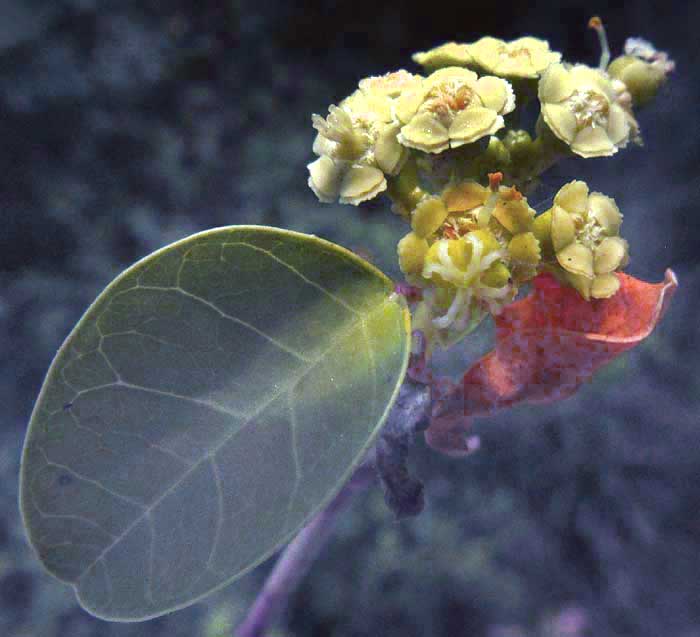
from the November 30, 2014 Newsletter issued from Río Lagartos, on the Yucatan Peninsula's northern coast (~N21.60°, ~W88.16°), Yucatán state, MÉXICO
TREE CALLED CHICKEN MEDICINE
In this area especially in dry soil where trees are returning to cleared forest areas and savannas there's a much-branched, small tree that now at the end of the rainy season already is losing its leaves, except for a few small ones at branch tips. Its many slender stems are whitish, emphasizing the intricacy of the tree's maze of branches, as shown below:
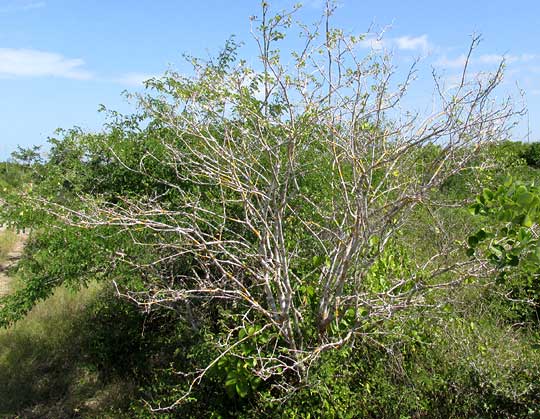
A close-up of the tree's multiple white trunks splotched with yellow lichen can be seen below:
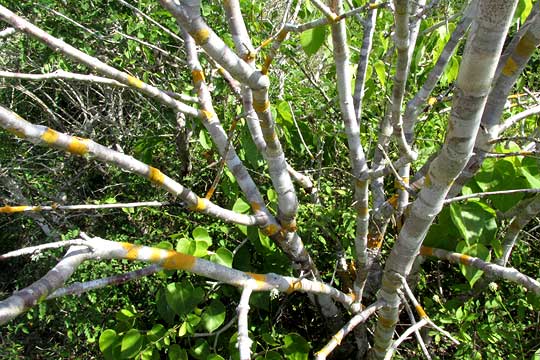
The tree's simple leaves aren't much longer than an inch (3cm), and the ones presently on new sprouts are even smaller, as shown below:
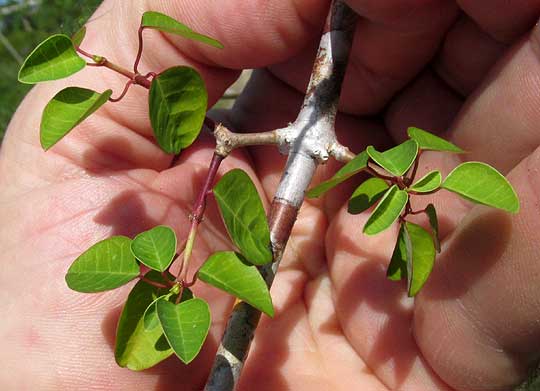
If you break one of those leaves apart, white latex emerges from its veins, as seen below:
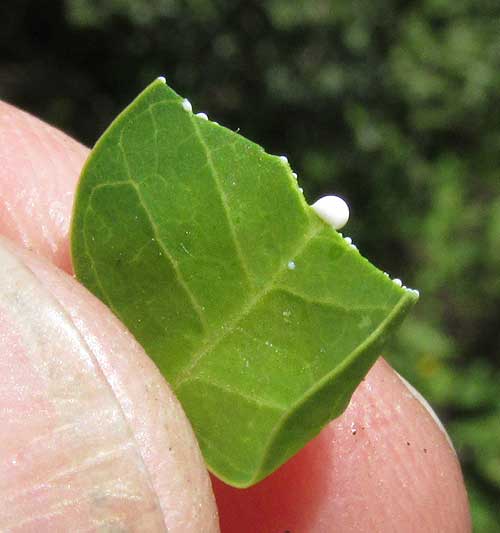
The leaf shape and texture, and this white latex, suggest that our little tree belongs to the big, mostly tropical Euphorbia or Spurge Family, the Euphorbiaceae. However, we have lots of species in this family here, so that's not much help. What's needed for a good identification is flowers and fruits, but normally trees at the end of their leaf-dropping time don't bear flowers and fruits. But, this little tree does. At the top of this page a cluster of tiny, branch-tip flowers in various stages of development is shown.
Here's a close-up of a flower showing an important feature:
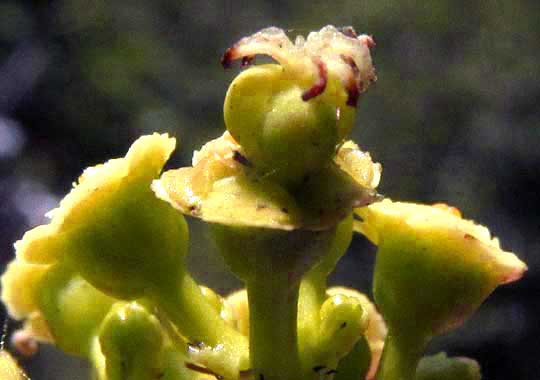
This picture shows a female flower being held outside a cup-like structure. The unisexual flower consists of nothing but a three-lobed ovary topped by three white style-arms with purplish stigmatic areas where pollen grains from male flowers are supposed to land and germinate. Once the female flower is pollinated, its pedicel greatly enlarges and the ovary swells into a brown, three-parted, capsular fruit, as shown below:

Though we've never seen anything exactly like this, many times in this Newsletter we've encountered this identical basic flower structure.
First, the bowl-like structures on stems looking like flowers are actually "cyathia" inside which reside one or more male flowers consisting of no more than one stamen. And amidst these stripped-down male flowers a stem, or pedicel, arises, atop which -- held outside the cyathium -- there's a three-lobed ovary topped with three styles with dark stigmas at their tips.
These are the diagnostic features of a group of plants known as spurges, the genus Euphorbia, in the big Spurge Family, which embraces about 300 genera. By now we well know that within the genus Euphorbia the variety of plant forms is mind boggling -- though basic flower structure remains the same throughout. There are tiny, weedy, herbaceous euphorbias, and those who might be mistaken for large, spiny cactuses; there are regular wildflowers, ornamental cultivars and, as we see now, regular trees.
Our tree euphorbia is EUPHORBIA SCHLECHTENDALII, which seems to have no English name, but in Spanish literature often is referred to as Medicina de las Gallinas, which means "Chicken Medicine." It might as well be called "Tree Euphorbia." I find no relationship between the tree and chickens, but it's true that in Oaxaca its latex is dissolved in water and used for venereal diseases and chest pains resulting from indigestion, and in the Yucatán the macerated leaves have been used against dandruff.
"Chicken Medicine" occurs in hot, arid lowlands from central Mexico south to Costa Rica, mainly serving as a pioneer tree in rejuvenating forests.